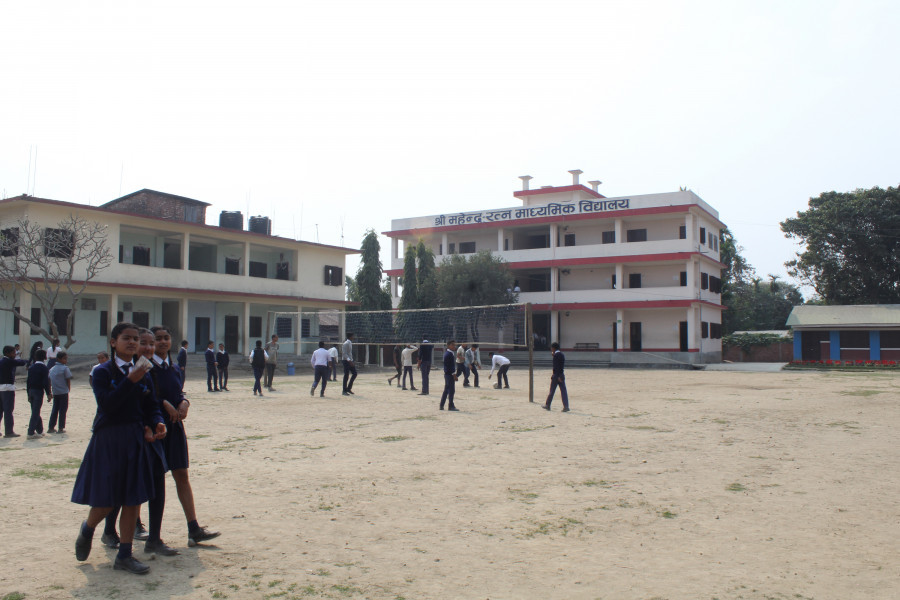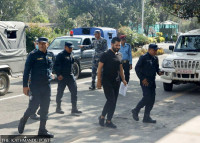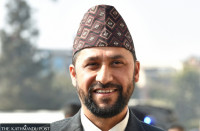National
Public schools focus on construction while virtual learning suffers
Most schools are using presidential funds on classrooms and toilets construction.
Binod Ghimire
As many as 38 public schools in Banke district received between Rs 1.8 and Rs 2.5 million under the President Education Improvement Programme earlier this year. The programme was introduced to support innovative projects and to boost the quality of education at public schools.
Amid the Covid-19 pandemic when in-person classes have not been possible in most of the country since last year and the schools should be spending more on virtual teaching-learning technology, a majority of the schools in Banke have used the programme’s funds either for adding classrooms or building toilets. Banke was among the most affected districts during the first wave of the pandemic and this year too it was the first district to impose prohibitory orders and shift to virtual classes at schools. However, just five schools in the district are learnt to have used the funds for installing virtual teaching-learning technology and seven others for setting up computer laboratories.
Just like the Banke schools, those in many other Covid hotspot districts have used the programme’s funds for purposes other than installing virtual learning technology. For instance, among the 29 schools in Parsa district that received the funds, only four said they would set up virtual learning technology, five wanted to set up computer labs, while the rest used the funds for the construction of classrooms and toilets.
The government had invited proposals from public schools across the country for the distribution of the Prgramme’s funds and selected schools on a needs basis. The government had allocated Rs 5.06 billion for the programme this year. After some of its budget was spent on the distribution of sanitary pads for girl students at public schools, the government had solicited proposals from public schools to distribute a total of Rs 3.3 billion.
The Ministry of Education selected 4,250 schools for the grants from among 6,921 applicants. Each of the selected schools received between Rs 650,000 and Rs 10 million under the programme. “The schools received the money based on their proposals,” Keshab Dahal, spokesperson at the Centre for Education and Human Resource Development, which oversees the school level education, told the Post.
Although education experts agree that schools should spend on classrooms and toilets for creating a better learning environment, they say such construction work should be carried out from the regular budget that the schools receive from the government and the Programme’s funds should have been used for the urgently needed virtual learning system.
“The construction work can wait, but virtual learning is the immediate need because of the pandemic, so they should be focussing on strengthening such platforms,” Tanka Nath Sharma, a professor at Kathmandu University, told the Post.
As various reports have shown virtual learning at community schools wasn’t effective last year, experts say the schools must work to improve the accessibility and quality of online classes.
The reports had pointed out various reasons for the ineffectiveness: students did not have access to virtual learning platforms, teachers didn’t have proper training on the use of such platforms and the absence of teacher-student interaction in virtual classes run through radio and television.
A study by the National Campaign for Education, an umbrella body of over 300 organisations working in the education sector, published in December last year showed virtual learning was ineffective for 64.3 percent of students surveyed. The survey carried out among the students, guardians and teachers from different districts in the seven provinces suggested that virtual learning didn’t yield satisfactory results.
Similarly, a survey report released by UNICEF Nepal in August found that more than two-thirds of schoolchildren in Nepal are deprived of distance learning opportunities. The Child and Family Tracker Survey, carried out among 7,500 households also showed that the poorer the household the less likely it is that children have access to or use distance learning.
“It is necessary that we set our priority right while allocating the budget at the time of crisis,” Dhananjaya Sharma, former principal at Gyanodaya School, Bafal, told the Post. “I believe that the President Education Improvement Programme hasn’t been able to do that.”




 8.12°C Kathmandu
8.12°C Kathmandu















